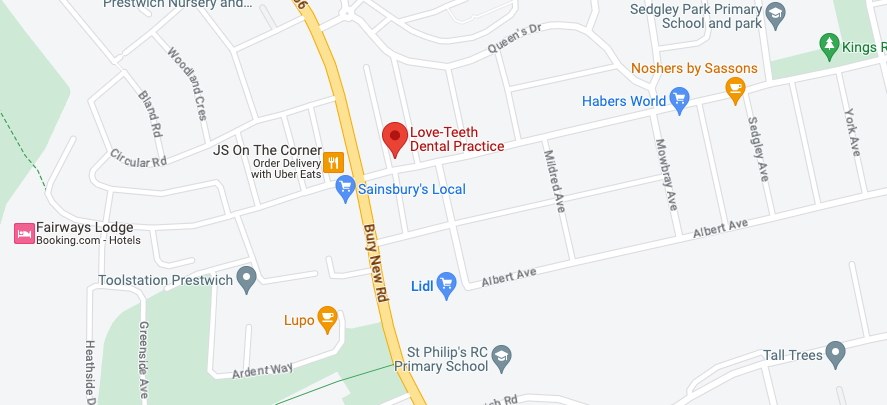Prestwich Dental Clinic
Gum and Teeth Contouring
View more about our teeth and gum contouring solutions below.
Support For
Nervous Patients
Flexible Dental
Payment Plans
Warm & Welcoming
Practice
Looking for the Perfect Smile?
In some cases people seek cosmetic dentistry because of the gums rather than the teeth, perhaps they are unhappy with a ‘gummy smile’.
Call our caring team on 0161 773 7080 today.
Teeth Contouring
Teeth contouring involves shaping the tooth to improve the shape, size, and appearance of your teeth. It is a quick and painless procedure that can be used to treat a wide range of dental concerns such as slightly overlapping teeth, crooked teeth, chipped teeth, and worn or uneven teeth.
As only the enamel is being reshaped, the treatment is completely pain-free. Our main priority is ensuring that you’re comfortable during the procedure, your teeth are healthy, and that you’re happy with your new smile.
Gum Contouring
A short procedure to improve the gum-line. In some cases, the gum can simply be trimmed back. In other cases, the bone and gum need to be cut back.
During this treatment, a flap of gum is lifted and the bone is trimmed and the gum replaced. This can have a significant effect on appearance.
Dental Maintenance Plans
We offer a comprehensive membership plan which provides many benefits as well as 20% off treatment* and starts from as little as £9.99/month adults/£5.99/month children – please ask at reception or call us at 0161 773 7080




